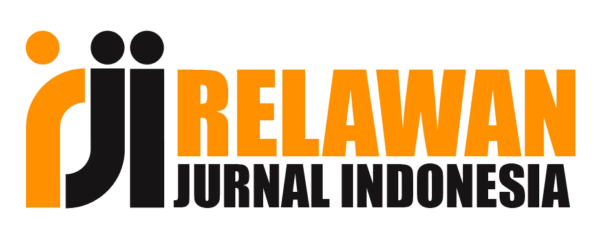The development of concept development-collaborative decision-making problem solving (CD-CDMPS) to improve the prospective physics teachers’ decision making skills
Abstract
Keywords
Full Text:
PDFReferences
Arvai, J. L., Campbell, V. E. A., Baird, A., & Rivers, L. (2004a). Teaching students to make better decisions about the environment: Lessons from the decision sciences. The Journal of Environmental Education, 36(1), 33–44.
Arvai, J. L., Campbell, V. E. A., Baird, A., & Rivers, L. (2004b). Teaching students to make better decisions about the environment: Lessons from the decision sciences. Journal of Environmental Education, 36(1), 33–44.
Asha, I. K., & Al Hawi, A. M. (2016). The impact of cooperative learning on developing the sixth grade students decision-making skill and academic achievement. Journal of Education and Practice, 7(10), 60–70.
Barkley, E. E., Cross, K. P., & Major, C. H. (2012). Collaborative learning techniques: Teknik-teknik pembelajaran kolaboratif. Terjemahan: Narulita Yusron. Bandung: Nusa Media.
Basyaib, F. (2006). Teori Pembuatan Keputusan. Jakarta: Grasindo.
Binkley, M., Erstad, O., Herman, J., Raizen, S., Ripley, M., Miller-Ricci, M., & Rumble, M. (2012). Defining twenty-first century skills. Assessment and Teaching of 21st Century Skills, 17–66.
Borg, W.R & Gall, M. D. (1983). Educational reseach: An Introduction 4th Ed. Longan, Inc.
Covitt, B. A., Harris, C. B., & Anderson, C. W. (2013). Evaluating scientific arguments with slow thinking. Science Scope, 37(3), 44.
Evagorou, M., Jimenez-Aleixandre, M. P., & Osborne, J. (2012). ‘Should we kill the grey squirrels?’A study exploring students’ justifications and decision-making. International Journal of Science Education, 34(3), 401–428.
Fund, Z., & Madjar, N. (2018). The influence of scaffolded computerised science problem solving on motivational aspects. International Journal of Science Education, 40(18), 2265–2291.
Gök, T., & Silay, I. (2008). Effects of problem-solving strategies teaching on the problem-solving attitudes of cooperative learning groups in physics education. Journal of Theory & Practice in Education (JTPE), 4(2).
Gresch, H., & Bögeholz, S. (2013). Identifying non-sustainable courses of action: A prerequisite for decision-making in education for sustainable development. Research in Science Education, 43(2), 733–754.
Gresch, H., Hasselhorn, M., & Bögeholz, S. (2017). Enhancing decision-making in STSE education by inducing reflection and self-regulated learning. Research in Science Education, 47(1), 95–118.
Hadzigeorgiou, Y., Fokialis, P., & Kabouropoulou, M. (2012). Thinking about creativity in science education. Creative Education, 3(05), 603.
Hake, R. R. (1998). Interactive-engagement versus traditional methods: A six-thousand-student survey of mechanics test data for introductory physics courses. American Journal of Physics, 66(1), 64–74.
Jho, H., Yoon, H.-G., & Kim, M. (2014). The relationship of science knowledge, attitude and decision making on socio-scientific issues: The case study of students’ debates on a nuclear power plant in Korea. Science & Education, 23, 1131–1151.
Jonassen, D. H. (2011). Learning to Solve Problems. Newyork: Routledge.
Kaşkaya, A., Calp, Ş., & Kuru, O. (2017). An evaluation of factors affecting decision making among 4th grade elementary school students with low socio-economic status. International Electronic Journal of Elementary Education, 9(4), 787–808.
Leak, A. E., Rothwell, S. L., Olivera, J., Zwickl, B., Vosburg, J., & Martin, K. N. (2017). Examining problem solving in physics-intensive Ph.D. research. Physical Review Physics Education Research, 13(2), 020101.
Lindahl, M. G., & Linder, C. (2015). What’s natural about nature? Deceptive concepts in socio-scientific decision-making. European Journal of Science and Mathematics Education, 3(3), 250–264.
Mercier, E., & Higgins, S. (2014). Creating joint representations of collaborative problem solving with multi‐touch technology. Journal of Computer Assisted Learning, 30(6), 497–510.
Paraskeva-Hadjichambi, D., Hadjichambis, A. C., & Korfiatis, K. (2015). How students’ values are intertwined with decisions in a socio-scientific issue. International Journal of Environmental and Science Education, 10(3), 493–513.
Soobard, R., & Rannikmäe, M. (2014). Upper secondary studentsself-perceptions of both their competence in problem solving, decision making and reasoning within science subjects and their future careers. Journal of Baltic Science Education, 13(4), 544.
Swartz, R. J. (2001). Thinking About Decision. Dalam Costa, Arthur (Penyunting). Developing of Minds (hlm. 58-66). Association for Supervision and Curriculum DevelopmentNo Title.
Tekbiyik, A. (2013). The Use of Jigsaw Collaborative Learning Method in Teaching Scocioscientific Issues: The case of Nuclear Energy. 237–253.
Yusal, Y., Suhandi, A., Setiawan, W., & Kaniawati, I. (2019). Profile of pre-service physics teachers’ decision-making skills related to electric circuit. Journal of Physics: Conference Series, 1157(3), 032071.
Yusal, Y., Suhandi, A., Setiawan, W., & Kaniawati, I. (2020). Construction and testing of decision-problem solving skills test instruments related basic physics content. Journal of Physics: Conference Series, 1521(2).
Yusal, Y., Suhandi, A., Setiawan, W., & Kaniawati, I. (2021). The effectiveness of collaborative problem-solving using decision-making problems to improve the pre-service physics teachers’ critical thinking skills. Jurnal Pendidikan Fisika, 9(2), 107–116.
DOI: https://doi.org/10.17509/wapfi.v7i2.34222
Refbacks
- There are currently no refbacks.
Copyright (c) 2022 Yulianti Yusal

This work is licensed under a Creative Commons Attribution-ShareAlike 4.0 International License.
The Journal Wahana Pendidikan Fisika http://ejournal.upi.edu/index.php/WapFi/ is licensed under a Creative Commons Attribution-ShareAlike 4.0 International License
The Journal WaPFi (Wahana Pendidikan Fisika).
All rights reserverd. pISSN 2338-1027 eISSN 2685-4414
Copyright © Faculty of Mathematics and Science Education (FPMIPA) Universitas Pendidikan Indonesia (UPI)











